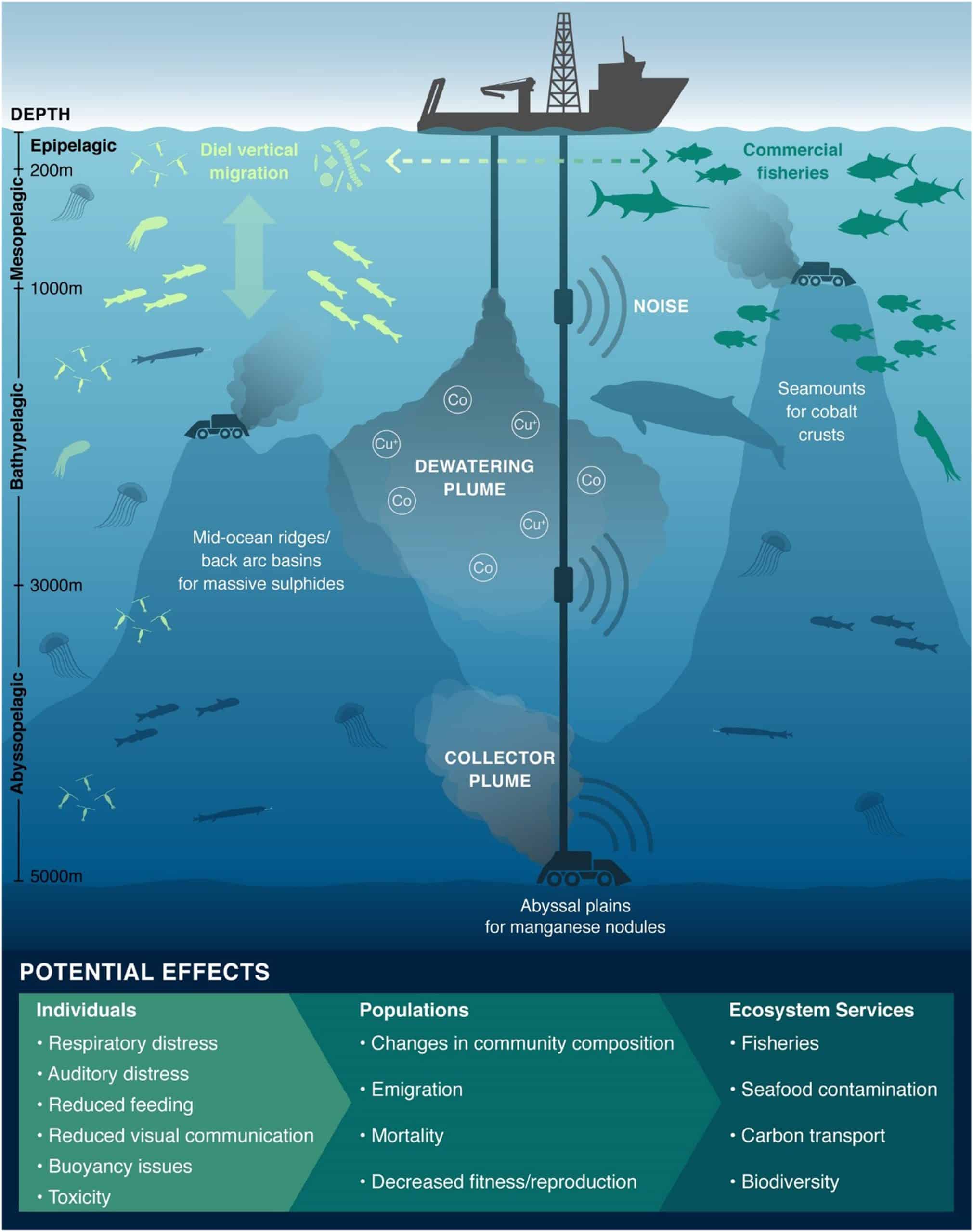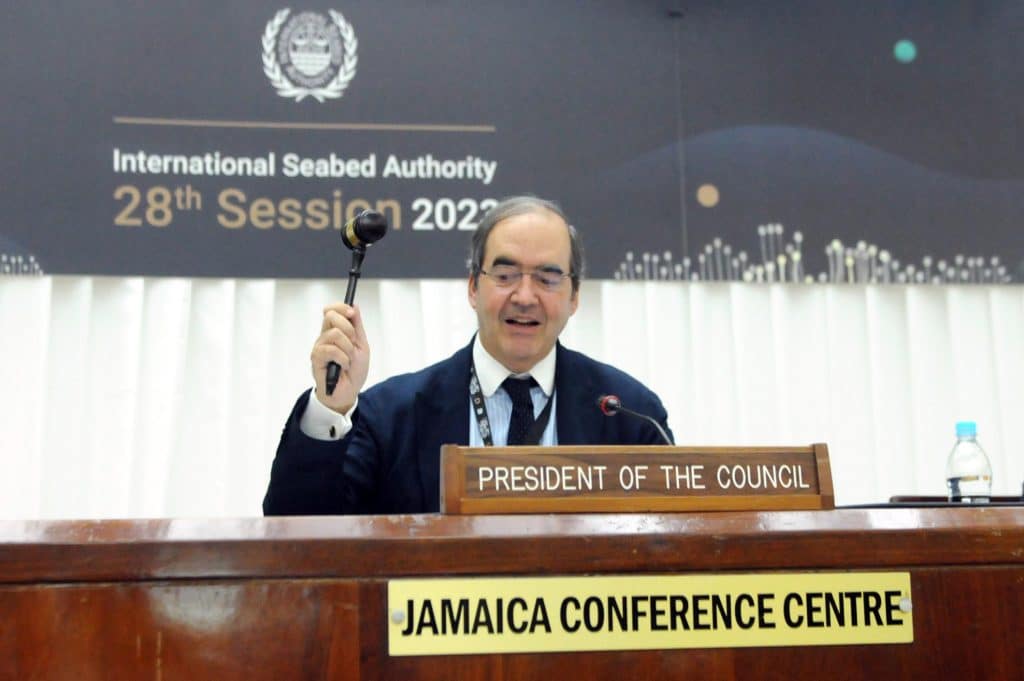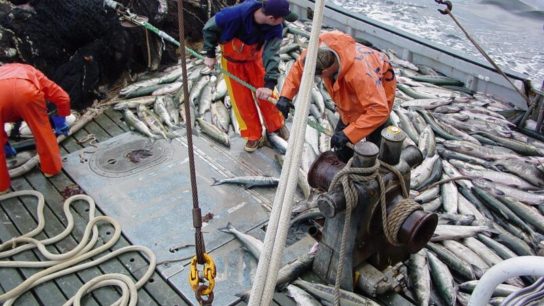The fate of Earth’s largest ecosystem hangs in the balance as nations debate high-stakes rules governing deep-sea mining. With trillions of valuable metals scattered across the seabed, companies and countries aim to mine the ocean depths. But regulations remain unsettled after recent negotiations in Jamaica, even as biodiversity and climate face irreversible risks. As delegates continue wrangling over terms in this underwater Wild West, calls for caution are swelling from scientists, advocates and world leaders. The International Seabed Authority (ISA) talks may yet determine if humanity can avoid reckless destruction in pursuing metals.
—
Deep-Sea Mining Negotiations in Jamaica
In July 2023, delegates from over 160 nations gathered in Kingston, Jamaica, for two weeks of intense negotiations over the rules governing deep-sea mining in international waters. For years, the International Seabed Authority (ISA) has been working to develop regulations to manage this emerging industry that holds both promise and peril for the oceans.
With the talks in Jamaica, the ISA entered the endgame of rule-setting but debates remain on key issues like environmental protections and profit sharing. The negotiations concluded with some progress but no final settlement, leaving the fate of deep seabed mining uncertain. However, one thing is clear: the ISA’s decisions in the coming years will have profound impacts stretching far into the future.
Deep-sea mining refers to extracting metals and minerals from the deep ocean floor at depths ranging from 200 to over 6,000 metres. The seafloor is rich with high-value mineral deposits, including precious metals (gold, silver), metal ores (manganese, nickel, cobalt, copper), and rare earth elements used in electronics. Developing these resources could provide essential materials for the green energy transition. However, it comes with significant environmental and social risks that demand careful governance.
The ISA was established under the UN Convention on the Law of the Sea to organise and control mining activities in the seabed beyond national jurisdiction, covering nearly 50% of the planet. Since 2001, the ISA has granted over 30 exploration licences, but full commercial mining has not yet begun. The ISA’s regulations will determine how and whether mining proceeds.
Key elements of the Mining Code being negotiated include:
- Environmental rules: The ISA has proposed regulations on environmental impact assessments, baseline studies, precautionary policies and more. But many contend these do not go far enough. There are calls to implement a moratorium until more research can be done.
- Financial model: A payment mechanism will require mining contractors to pay royalties, a share of which would fund the ISA and be redistributed to member states. But the rates and percentages are still disputed.
- Liability clauses: Rules to hold contractors financially liable for environmental damage are essential but remain unfinished.
- Transparency policies: Who decides and how remains opaque to many stakeholders who demand more openness.
In July 2023, after two weeks of vigorous discussions, the ISA made some headway but stalled on key issues like the moratorium question. The talks will pick up again in 2024. In the meantime, exploration continues, and commercial mining could begin within a few years.
Long-Term Environmental Stakes of Deep-Sea Mining
The protracted negotiations underscore the high stakes surrounding deep-sea mining’s short- and long-term impacts. What happens in the coming years could ripple through ocean ecosystems for decades and centuries to come.
Deep sea ecosystems are extremely fragile. Seafloor habitats and unique species, from tube worms to microbial communities, could be wiped out if mining proceeds recklessly. Light and noise pollution, sediment plumes, habitat disturbance and pollution from mining activities threaten biodiversity well beyond the immediate mining zones. Bottom trawling has already devastated many seamount complexes; mining could decimate those that remain. Evidence shows deep sea communities take decades or more to recover – if they can recover at all. The cumulative impacts could also disrupt vital food chains and ocean processes we depend on.
The deep sea’s biodiversity remains mostly unknown – only an estimated 1% of species have been discovered so far. Each new voyage reveals new species and habitats, increasing concerns over extinction risks. World-renowned deep-sea expert Dr. Cindy Lee Van Dover stated: “The overriding environmental issue is the loss of biological diversity: known, unknown, and unknowable.”
Deep sea mining risks biodiversity and could significantly impact global carbon dynamics. Sediment plumes could impede carbon capture by marine organisms, while seafloor sediment disturbance could release stored carbon into the oceans and atmosphere, aggravating climate change. One study estimated nodule mining could reduce ocean carbon storage by 16 million metric tons per year on average – equivalent to the annual carbon footprint of over 3 million US cars. The actual impacts are still speculative but undoubtedly carry long-term consequences extending centuries into the future.

Potential impacts of dee-sea mining. Image: Amanda Dillon/PNAS.
You might also like: UN Gives World Oceans ‘A Fighting Chance’ With Adoption of Landmark High Seas Treaty
The Need for Caution
The ISA negotiations in Jamaica showed there is still a long road ahead to develop a comprehensive governance regime for deep-sea mining. In the meantime, many stakeholders continue urging a precautionary approach. The Deep Sea Conservation Coalition and over 100 other groups have called for a moratorium until more research and effective regulations are implemented. Greenpeace, WWF, IUCN and numerous researchers support a moratorium as well.
Some countries are listening. In February 2023, the government of Belize announced that all offshore exploration contracts would be cancelled to make way for a moratorium. Chile and Fiji have also called for a pause.
With biodiversity in crisis globally, what happens in the deep sea could ripple through the living fabric of the oceans for generations. The UN Decade of Ocean Science for Sustainable Development recently began and provides an opportunity to fill knowledge gaps before disrupting these fragile ecosystems irreversibly. As delegates return to negotiations in 2024, they should heed calls for a precautionary approach and lay the foundations for truly sustainable, just and forward-looking stewardship of the deep ocean environment. We cannot afford to rush recklessly into the deep with so much at stake.
Featured image: IISD/ENB | Diego Noguera
You might also like: 11 of the Most Endangered Species in the Ocean in 2023


















